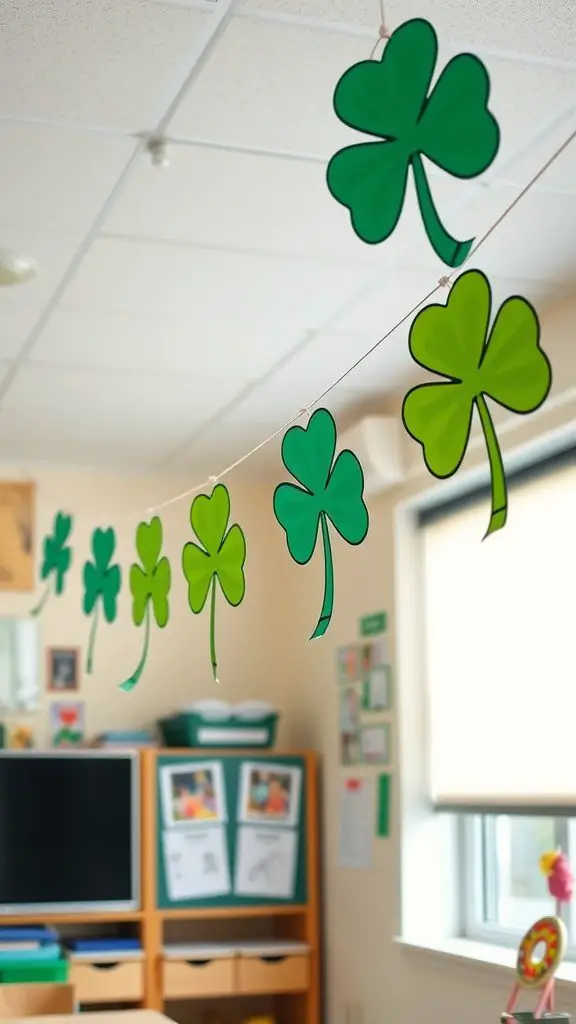Most aspiring artists face the challenge of capturing the essence of their subjects in portraits. In this guide, you will explore various DIY art projects that cater to beginners, empowering you to create stunning portraits with confidence. By utilizing simple techniques and readily available materials, you’ll learn how to express your unique style and vision. Get ready to unleash your creativity and discover the joy of portraiture like never before!
Understanding Portraits
The art of portraiture is a profound way to capture the essence of a subject, revealing their personality, emotions, and stories. By understanding the nuances of portraits, you can create striking works that reflect not only the visual likeness of your subjects but also their inner selves. Engaging with portraits allows you to explore different techniques and styles, enhancing your artistic journey, whether you’re a beginner or more advanced artist.
The Elements of Portraiture
Around the world of portraiture, several key elements come into play, including composition, lighting, color, and expressions. These aspects work together to create a compelling image that conveys depth and meaning. You’ll want to consider how each element interacts to enhance your overall portrayal, ensuring that your subject’s individuality shines through.
Styles and Techniques
With a diverse range of styles and techniques available, you can choose from classic realism to contemporary abstract interpretations. Each approach allows you to express yourself creatively, while also offering distinct challenges to explore. Understanding these styles can help you develop your unique artistic voice, producing portraits that resonate with both you and your audience.
A great way to dive deeper into styles and techniques is to experiment with various mediums and tools. You might find your preferred method in painting, sketching, or photography, each offering distinct visual narratives. Consider studying renowned artists to see how they approached portraiture, allowing you to draw inspiration while honing your skills. By practicing different styles, you can discover what resonates most with your artistic vision and create portraits that truly reflect your individual perspective.
Essential Materials for Portrait Painting
One of the first steps in creating stunning portraits is gathering your important materials. Whether you are painting with oils, acrylics, or watercolors, having the right supplies will greatly enhance your artwork. You will need paper or canvas, brushes in various sizes, and a palette for mixing colors. Additional items like easels, palettes knives, and varnishes can also help elevate your portrait painting experience. Investing in quality materials is worthwhile as they can improve your technique and overall results.
Choosing the Right Medium
Among the various art mediums available, each offers unique characteristics that can affect the look and feel of your portraits. Oils provide a rich texture and deep colors, while acrylics are quick-drying and versatile. Watercolors are excellent for a soft, fluid effect. Consider your preferences and desired outcome when selecting your medium. Experimenting with different options will help you find the one that resonates with your artistic style.
Recommended Tools and Supplies
Choosing the right tools and supplies can make a significant difference in your portrait painting journey. You’ll want to include high-quality brushes, a sturdy easel, and a reliable palette. Additionally, good-quality paints, a variety of canvases, and proper cleaning supplies will ensure your setup is efficient and enjoyable. Each tool contributes to your painting process, enhancing your ability to bring your artistic vision to life.
Considering the wide range of tools available, it’s important to know what serves your style best. For brushes, opt for a mix of round and flat shapes to achieve different strokes and details. An adjustable easel will provide stability for any canvas size. For palettes, wooden or disposable ones allow for easy mixing. Quality paint should align with your chosen medium, so investing in artist-grade paints may yield richer results. Having these important tools on hand will enhance your creative flow and streamline the portrait painting process.
Color Theory for Portraits
Now that you’re ready to launch on your portrait journey, understanding color theory is key to creating depth and emotion in your artwork. By mastering the relationship between colors, you can enhance your subjects’ features and convey the mood you envision. From warm tones that evoke intimacy to cool hues that suggest calmness, the choices you make will significantly impact the visual narrative of your portraits.
The Basics of Color Mixing
After familiarizing yourself with the color wheel, you can start experimenting with primary, secondary, and tertiary colors to enhance your palette. Mixing colors involves understanding how to create shades, tints, and tones. By practicing these techniques, you will gain confidence in selecting colors that harmonize well together, improving your overall portrait quality.
Creating Skin Tones
Among the many aspects of portrait painting, achieving realistic skin tones is one of the most rewarding challenges. It requires a keen understanding of how to blend colors effectively, as human skin has a variety of undertones influenced by ethnicity, lighting, and environment.
Indeed, creating accurate skin tones involves mixing a combination of red, yellow, and blue in various proportions. It’s beneficial to add a hint of complementary colors, such as green or purple, to neutralize overly vibrant blends. Experimenting with different ratios and adding white for tints or black for shades allows you to achieve a range of hues that represent the diverse spectrum of human skin. Don’t hesitate to test your mixtures on a separate canvas before applying them to your portrait, ensuring you capture the lifelike essence you aim to portray.
Step-by-Step Guide to Creating Your First Portrait
Keep your creativity flowing as you launch on your portrait journey! Follow this structured guide to simplify the process and enhance your artistic skills.
| Step | Action |
| 1 | Gather your materials: pencils, eraser, paper, and paints. |
| 2 | Choose a reference photo or subject. |
| 3 | Sketch the outline gently. |
| 4 | Layer colors and details. |
| 5 | Finalize your artwork with finishing touches. |
Sketching the Outline
One of the pivotal steps in portrait creation is sketching the outline. Start by lightly marking the basic shapes and proportions during this stage. Focus on capturing the essence of your subject’s features, ensuring you maintain a balanced composition before moving on to more detailed work.
Layering and Detailing
Across the portrait process, layering and detailing takes your artwork to the next level. Begin by applying a base color to establish the overall tone, then gradually add layers to deepen shadows and highlight features, which will give your portrait depth and dimension.
This step involves using a light touch to build up the colors gradually. Focus on areas like the eyes, lips, and hair to ensure they truly pop. Don’t hesitate to blend colors to achieve smooth transitions, and utilize finer tools for intricate details to capture the personality and emotion of your subject. Take your time with this process; it’s about enhancing the vibrancy and life of your portrait.
Tips for Capturing Expressions and Emotions
Your ability to capture authentic expressions can transform an ordinary portrait into a compelling work of art. Here are some tips to help you succeed:
- Engage in conversation to evoke natural reactions.
- Exercise patience; give your subject time to relax.
- Pay attention to subtle changes in expression.
This will help you create portraits that resonate with viewers.
Understanding Facial Features
Tips for understanding facial features include observing the unique characteristics of each face. Focus on the shape of the eyes, nose, and mouth, as these elements significantly contribute to conveying emotions. Recognizing how different angles affect these features can help you capture a more dynamic and expressive portrait.
Conveying Mood in Portraits
At the heart of every powerful portrait is the mood it conveys. Use lighting, color, and composition to set the tone of your artwork. Experiment with different lighting setups to influence the atmosphere, and choose colors that evoke specific feelings.
In addition, the choice of background and props can enhance the mood you wish to express. For instance, dark backgrounds often create a somber feel, while bright, colorful settings might convey joy and vibrancy. By carefully considering these elements in your portraits, you can effectively communicate the emotional depth of your subject to your audience.
Final Touches and Presentation
To elevate your portrait and showcase your artistic abilities, consider adding final touches that enhance the overall composition. You can refine details, adjust colors, and even incorporate additional elements like textures. By focusing on these finishing details, you ensure your piece stands out and fulfills your creative vision.
Varnishing and Framing
An effective way to protect and present your artwork is through varnishing and framing. Varnish not only safeguards your piece from environmental factors but also enriches the colors, giving it a professional finish. When dicking out a frame, consider the style that complements your artwork while enhancing its visual appeal.
Showcasing Your Work
Across various platforms and settings, showcasing your work allows you to reach a wider audience and gain valuable feedback. Whether it’s sharing on social media, participating in local art shows, or creating a dedicated portfolio, make sure your presentation is polished and engaging.
Understanding the importance of showcasing your work helps you connect with other artists and potential clients. Utilize social media to create an online presence, curate an aesthetically pleasing gallery, and interact with your audience. Participation in exhibitions or local art fairs can also provide excellent exposure. Don’t hesitate to share your creative journey; your story adds depth to your work and resonates with viewers, encouraging them to appreciate your art even more.
Conclusion
To wrap up, creating stunning portraits through DIY art projects is an exciting journey that allows you to express your creativity while honing your artistic skills. By following simple techniques and utilizing readily available materials, you can bring your unique vision to life. Whether you’re capturing a loved one or experimenting with styles, your approach can lead to beautiful, personalized artwork. Embrace the process, enjoy experimenting, and watch your confidence grow as you craft impressive portraits that truly reflect your artistic voice.
FAQ
Q: What materials do I need to start creating stunning portraits?
A: To create stunning portraits, you’ll need basic art supplies such as pencils, charcoal, acrylic or watercolor paints, brushes, canvas or sturdy paper, an eraser, and a palette. You might also want to have a reference photo or a mirror if you’re working from a live model. Additionally, optional materials like pastels, markers, or digital tools can enhance your artwork.
Q: Are there specific techniques I should learn for portrait drawing?
A: Yes, there are several techniques that can improve your portrait drawing skills. Start with the basic shapes to map out the face, learn about proportions – such as the placement of the eyes, nose, and mouth – and practice shading to create depth and dimension. Experimenting with different styles, such as realism or abstract, can also enhance your portraits.
Q: How can I choose the right reference photo for my portrait?
A: When dicking out a reference photo, look for an image that has good lighting and clear features. Consider the mood and expression you want to convey through your portrait. High-resolution images with a range of tonal values will help you capture details more accurately. It can be beneficial to choose photos that display interesting angles or dramatic lighting for a striking result.
Q: What tips do you have for beginners who may feel discouraged by their progress?
A: It’s entirely normal for beginners to feel discouraged at times. Focus on enjoying the process of creating rather than aiming for perfection. Allow yourself to make mistakes, as they are part of learning. Consider setting small goals to track your improvement and celebrate each achievement. Engaging with online art communities can provide support, inspiration, and constructive feedback.
Q: Can I explore digital portrait creation with the methods from ‘Create Stunning Portraits’?
A: Absolutely! While many methods in ‘Create Stunning Portraits’ are focused on traditional media, the principles of sketching, composition, and color theory apply to digital art as well. You can use digital art software like Procreate or Adobe Photoshop to implement these techniques. Just adapt the traditional methods to the digital tools available, which may even offer additional creative options.




